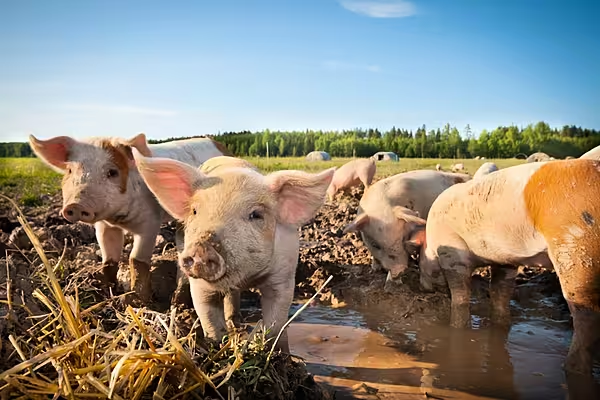Cocoa prices may have climbed to a 39-year high, but for once chocolate makers have been spared.
That’s because the rally that took futures traded in London to the highest level since 1977 was spurred by a weakening pound after the U.K.’s decision to leave the European Union. With most chocolate makers paying their bills in either euros or dollars, prices in those currencies have actually dropped since the June 23 Brexit vote.
“Cocoa is not more expensive, it’s probably a bit cheaper now than before the Brexit," said Laurent Pipitone, director of the economics and statistics division at the London-based International Cocoa Organization. Chocolate makers “don’t buy in pounds, they buy in euros or in dollars."
Futures for September delivery reached 2,518 pounds ($3,245) a metric ton Friday on the ICE Futures Europe exchange, the highest for a second-month contract since 1977, data provided by futures and options brokerage Marex Spectron Group Ltd. showed. While prices in pounds rallied 10 percent since the Brexit vote, they declined 1.1 percent in euro terms and 3.9 percent in dollars.
Traders usually look at long-term price movements using the second futures contract available to avoid price swings on the front month just before expiration.
Cocoa is heading for a fifth year of gains in the longest winning streak since at least 1989. Prices are rising after dry weather in West Africa hurt the smaller of two annual crops, prompting traders including Cargill Inc., Olam International and Sucres et Denrees SA to forecast shortages.
The amount of cocoa stockpiles relative to consumption, the so-called stocks-to-use ratio, is forecast to fall to 34.3 percent, the lowest in 31 years, according to the ICCO. In 1977, when futures in London reached a record, that measure was at an all-time low of 19.1 percent, said Pipitone.
“It was difficult to get hold of beans at the time," he said. "There was the oil crisis as well. All commodities were affected during this period and the price of most commodities increased significantly."
While the Brexit vote resulted in higher cocoa futures in London, the consequences it may have on confidence, growth and the wider economy will probably be negative for prices in the longer term, said Edward George, head of research at Lome, Togo-based lender Ecobank Transnational Inc. With economies potentially slowing, demand for chocolate could fall further, he said.
Global chocolate sales declined 2 percent in the nine months through May, Barry Callebaut AG, the world’s largest cocoa processor, said in an earnings statement last week, citing data from analytics group Nielsen. The market contracted 1.2 percent in Europe, the Middle East and Africa, 3.3 percent in the Americas and 2.1 percent in Asia.
Dollar-denominated cocoa traded on ICE Futures U.S. in New York declined 2.7 percent since the Brexit vote to trade at $3,097 a ton Friday. Cocoa is one of the few commodities to trade in pounds and dollars in roughly equal volume, quality and market structure on both sides of the Atlantic, according to Citigroup Inc.
“What happened in London and New York is clearly mainly due to the Brexit and that’s why they went in opposite directions," Pipitone said. “We all expect a large deficit this year but that has been on plan for quite some time."
News by Bloomberg, edited by ESM. To subscribe to ESM: The European Supermarket Magazine, click here.














